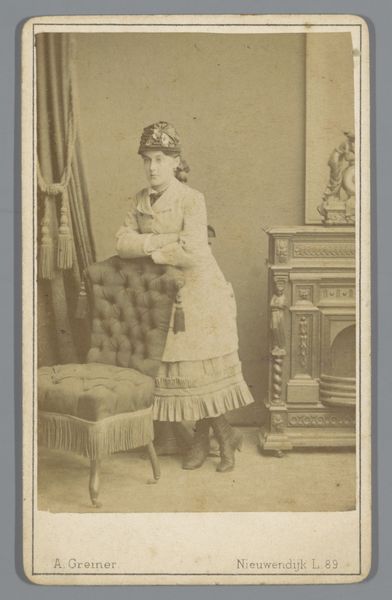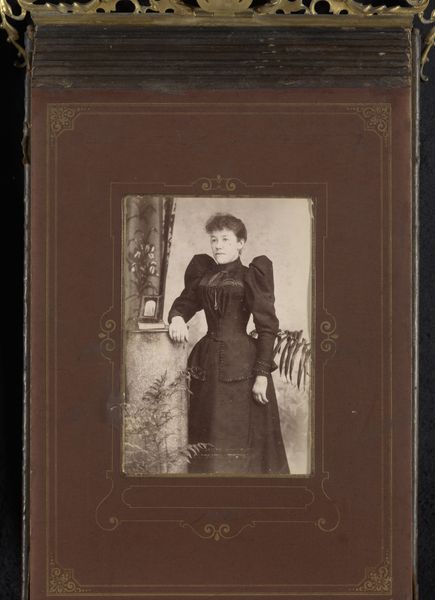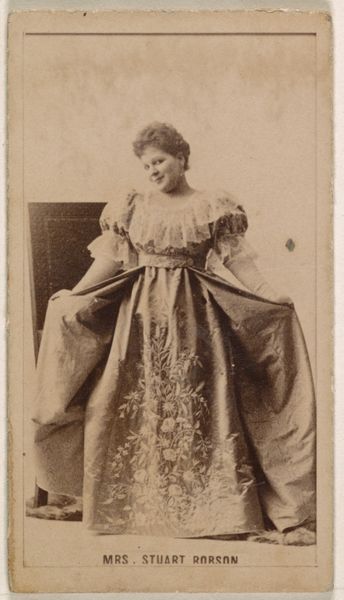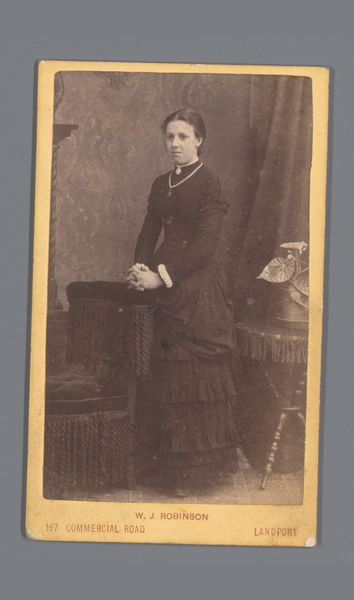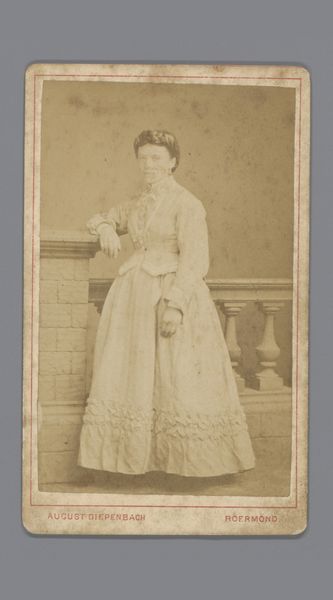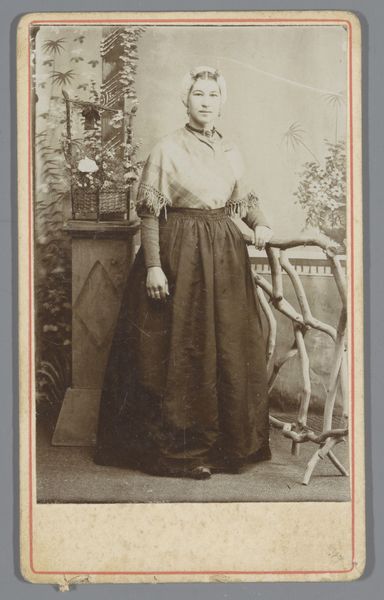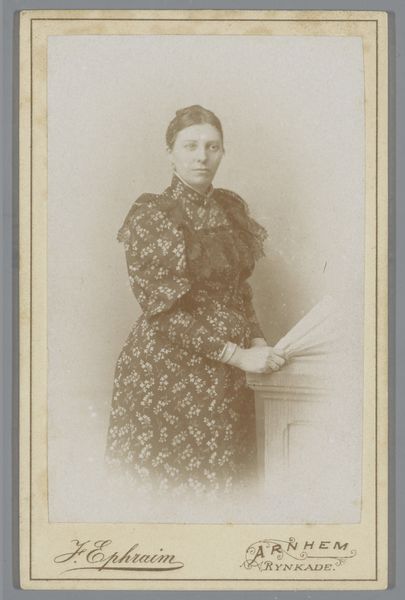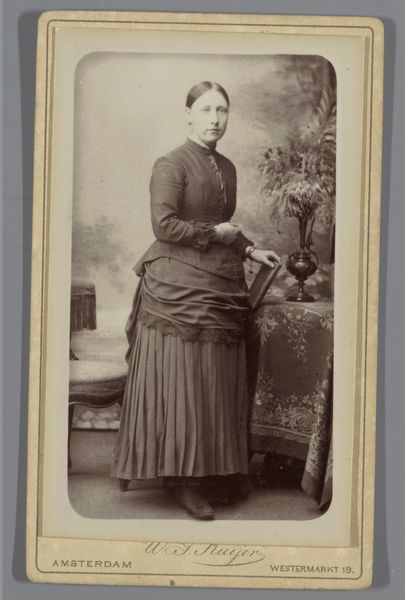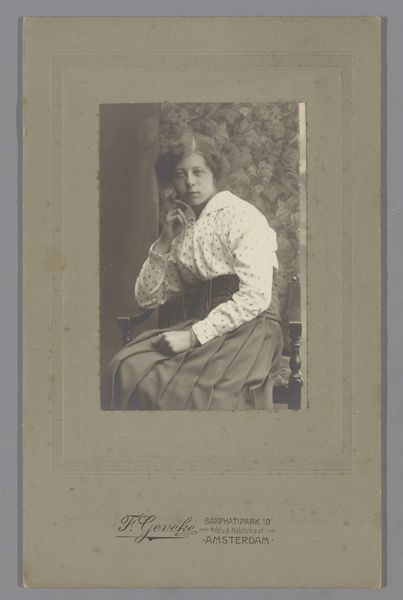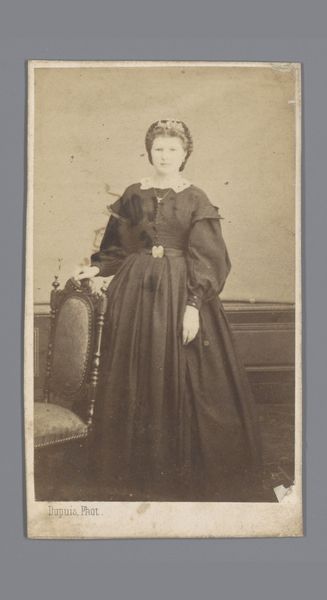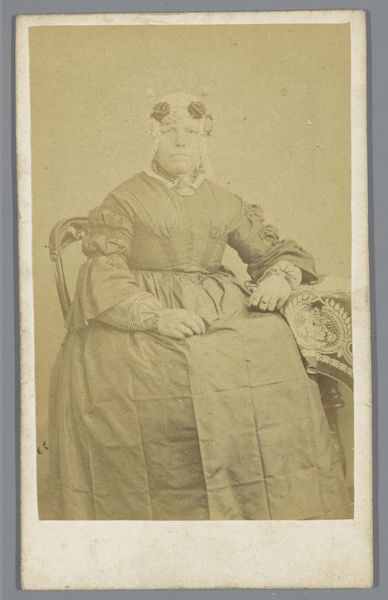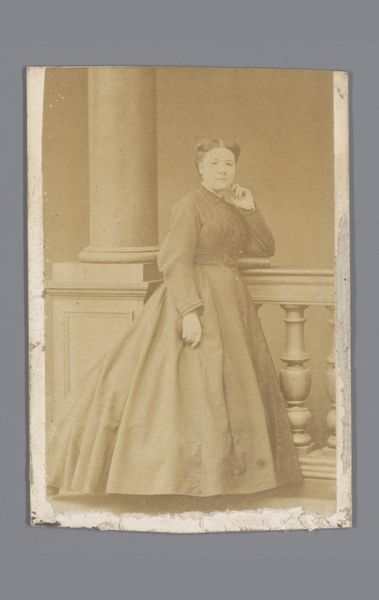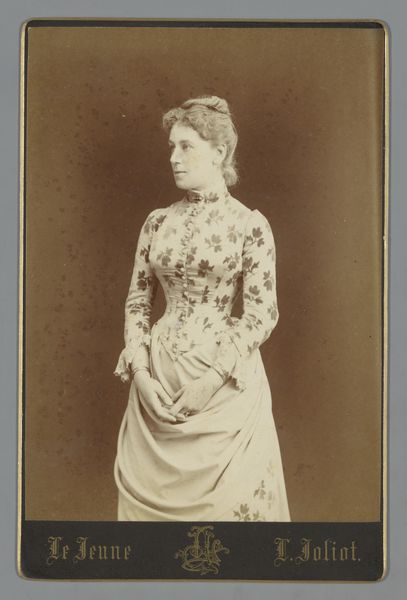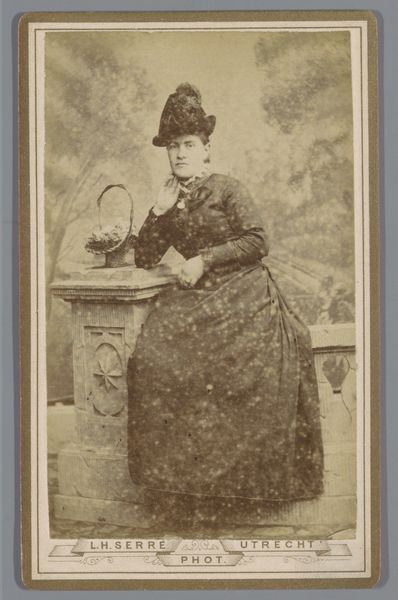
Portret van een onbekende vrouw, leunend op de rugleuning van een stoel 1896 - 1920
0:00
0:00
photography
#
portrait
#
photography
#
framed image
#
watercolor
#
realism
Dimensions: height 233 mm, width 129 mm, depth 10 mm
Copyright: Rijks Museum: Open Domain
Curator: This is "Portrait of an Unknown Woman, Leaning on the Back of a Chair," created sometime between 1896 and 1920 by Franciscus G. Lukera. It’s a striking photographic portrait housed within a beautifully crafted frame. Editor: My first impression is the formality; it speaks volumes about the era’s expectations for women in society. The photographic print gives the appearance of watercolor given its matte texture and monochromatic palette, especially as set against the ornate wooden frame, all seems carefully designed to convey status. Curator: Precisely. Consider the woman's posture – leaning ever so gently on the chair, suggesting a certain weariness, or perhaps nonchalant defiance. What narratives are intertwined into women leaning at this time and in prior cultural periods, for example? What power dynamics are playing out within the performativity of her posture and costuming choices? Editor: And what about the chair? It's clearly a decorative prop but likely speaks volumes about class. Look closely at its carved elements and ornate upholstery, indicators of resources dedicated to making. That frame itself – constructed of wood – adds another layer to this interpretation. It's so meticulously constructed, almost demanding that the image within is elevated. It calls to attention all materials involved and raises the image into the fine art sphere. Curator: I agree. The materials used speak to societal aspirations but what about the artist's decision to capture this subject. It's an interesting intersection – the seemingly everyday rendered with such attention to detail, perhaps subtly resisting the rigid societal constraints. How does photography as a burgeoning technology democratize or further stratify the subject's importance? Editor: I’m particularly interested in that democratization angle. Photography itself provided an affordable alternative to painted portraits, which were formerly reserved for elites. Perhaps this photograph captures the tension between aspiring to and maintaining one's position within emerging class structures and is about who now gets to control representation in image making? Curator: Absolutely. I find this work forces an examination into representation, the constraints placed on women’s posture and performativity. Her individuality fights with cultural expectations of behavior. Editor: For me, this photograph, and the physical making of the photograph, serve as reminder of the socio-economic conditions from which it came. I find its real power comes from considering its tactile history: how it was crafted, by whom, and for what specific function, all rooted in class. Curator: In conclusion, this piece is a mirror reflecting a specific moment and posing pertinent questions about identity, society, and representation in media culture, today. Editor: Precisely, and it provides us with much needed perspectives regarding class status, materiality, labor and consumerism when it comes to representation through visual artworks and how this extends into the culture of image production, today.
Comments
No comments
Be the first to comment and join the conversation on the ultimate creative platform.
